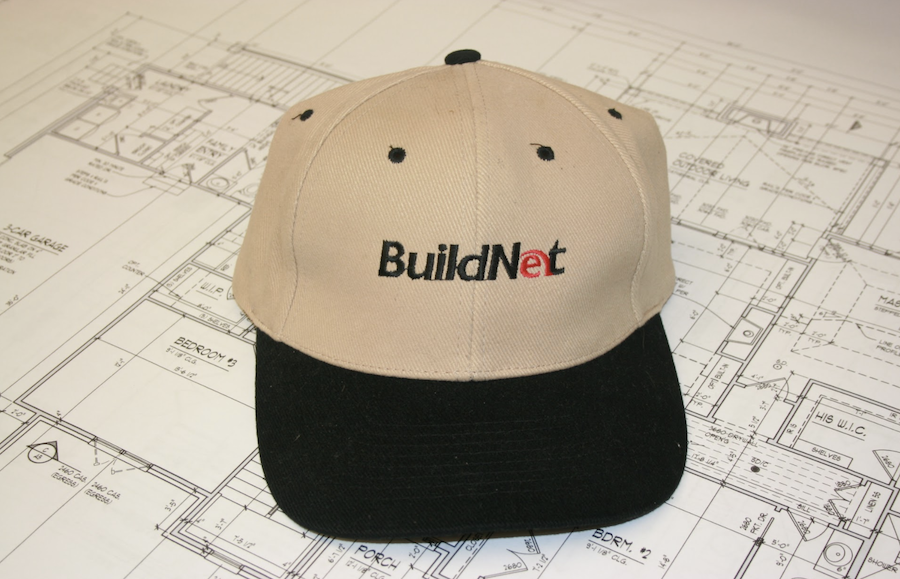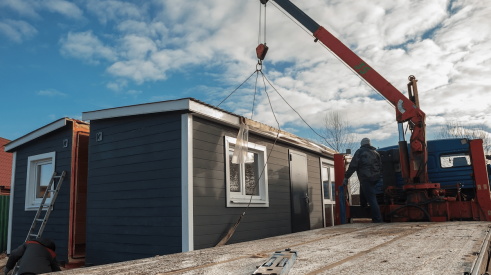It’s nearly impossible to read a building industry publication in print or online today without encountering multiple articles touting how the application of manufacturing technology is about to change home building forever. The implication is that if you aren’t keeping pace, you’ll be left behind. These techniques will solve the labor shortage, eliminate waste, reduce managerial burden, improve quality, and drastically reduce cycle time. Can I get a witness?
Well no, not exactly. And therein lies the rub. There’s a wealth of written knowledge on the subject, but precious little application. I’m taken back two decades to the late 1990s, when the wholesale change of home building was predicted at every turn in response to another revolution: the dot-com boom. It ran at a fever-pitch for several years, and folks could hardly talk about anything else. Every home building publisher had their dot-com conference with multiple stages of panelists and pundits. There’s one particular event I vividly recall because I’d had eye surgery just two weeks prior. I was cleared to travel and felt fine on arrival. But before long I was in terrific pain and an angel, in the guise of a management consultant named Noelle Tarabulski, nursed me along for both days as we listened to prognostications about how this (and that, and that) would change everything! Noelle and I have been friends ever since, and when we reminisce about that conference, we recall my physical trials and marvel at all the wild claims that were bandied about.
Home Builder Supply Chain Solution?
Among the major presenters and acknowledged leaders of this revolution was a company named BuildNet, a firm that planned to eliminate the inefficiencies in the home builder supply chain. Its founder gave an impassioned speech at the conference and was as convincing as he was condescending. In so many words, he warned that if you didn’t fully buy into what he was saying, there was something seriously wrong with you and you may as well plan for early retirement.
BuildNet, along with a few others, shook up the industry for a time. It had people everywhere, and for several years running it put on one of the best (and most expensive) parties at the NAHB International Builders’ Show. BuildNet had to be the real deal, didn’t it? I mean, you can’t spend that much money unless a lot of heavyweights are behind you, right? And they were; a cadre of name-brand firms that rushed to get onboard. Among BuildNet’s executives-for-hire was the former chairman of CompUSA, an impressive man. Anyone over 35 will recall CompUSA as the company that ruled the retail computer world for many years, then vanished. There were many other high-powered companies and individuals involved from both inside and outside home building under the BuildNet umbrella as employees or investors, most notably GE Capital, about half of the 10 largest public builders, and several top industry suppliers.
A couple of months after that conference, I found myself sitting with BuildNet’s founder in the lobby of the Sheraton Denver Tech Center Hotel. He described his vision: how homebuyers will sit at their computers in the evening and simply click and drag the master bedroom wall over 2 feet to increase the room size. Then they’ll change the shower layout, kitchen cabinet style, countertop colors—anything they want. Instantly all the change notices would be sent to every supplier and trade, with all costs calculated and adjusted. Field superintendents would also be notified, and the plan automatically updated with full, site-specific details. Seamless. Foolproof.
When I mentioned that dragging over a master bedroom wall would change the foundation, framing, siding, roof, trusses, mechanicals, flooring, drywall, and even things like gutters, involving about 12 to 15 suppliers and trades, he said, “No problem. We already have that figured out.”

THERE WAS THE BUILDNET VISION, BUT IT FAR EXCEEDED THE CAPABILITY OF THE INDUSTRY BACK THEN—AND IT STILL DOES TODAY.
Keep in mind, this was fully 20 years ago! I listened in amazement and asked how long before the system was 100 percent up and running. With a straight face he declared “within two years.” He meant it. He believed it. And now he wanted me and a veritable slew of others he was recruiting to be part of it.
I had only started TrueNorth a couple of years prior, and here was the founder of BuildNet offering me the world to launch and run his latest brainstorm, BuildNet University. The goal: take over training in the industry, putting together a catalog of 50—perhaps eventually 100 or more—courses and take them nationwide. The money was excellent, with a scary number of “stock warrants” thrown in for good measure. What were those worth? All he could say was that, when the company eventually went to IPO, they’d be worth millions. I must have been telegraphing my unease because the founder looked hard at me and asked, “Do you want to run consulting projects for second-rate builders for the rest of your life, or come with me and change the world?”
That sealed the deal, but not in the way he’d planned. Virtually the same line had been famously used by Steve Jobs to recruit John Sculley, former president of PepsiCo, to run Apple: “Do you want to sell sugar water for the rest of your life, or do you want to come with me and change the world?” Sculley took the Apple job, but eventually his relationship with Jobs soured. Tempting as the BuildNet offer was, my gut told me this venture would ultimately fail. Besides, I didn’t appreciate BuildNet’s founder insulting my work with some truly good builders, and something about his using Steve Jobs’ line as if he’d thought of it, rubbed me the wrong way.

Less than two years later, BuildNet had bought most of the home building software firms out there, hired nearly 900 people, gone through tens of millions of dollars of other people’s money, and had shut down. There was value to the BuildNet vision, but it far exceeded the capability of the industry back then and, ironically, we’re still years away from that today.
Revolutionary Tendencies
The home building dot-com frenzy hardly died with BuildNet’s demise. Other intriguing start-ups that planned to lead a revolution included USBuild.com, which aimed to consolidate transportation and delivery of the thousands of items that make up a new home, eliminate the dead space in warehouses and trucks, and, like everyone else, change the industry forever.
I liked those guys and had many meetings and conversations with them. They ran an interesting experiment in Denver involving a couple of our clients, which launched with a bang and closed with a whimper. I don’t recall how much money they burned through before giving it up, but it was in the range of eight figures. Sometimes a Great Notion, the title of an old Ken Kesey novel, comes to mind as an apt description. Yet, it was a great notion; another attempt to clean up the horribly inefficient home building supply chain. USBuild
.com had indeed identified tremendous waste and great opportunity. It just couldn’t corral this crazy industry into using its brilliant ideas.
Around the same time, one of my clients—this one a first-rate, medium-size builder—came up with a great strategy for turning a housing development into an ongoing revenue source. He’d emphasize his point by asking (rightly so): “How many companies build a product, then ‘shut the store down’ the moment they sell it?” Other builders tried to create revenue streams from sold product by launching a remodeling and/or interior design company to add options down the road, but those never amounted to much. His idea, however, was to completely wire the homes, creating a communitywide intranet. Recent deregulation of utilities would then allow the builder to own the intranet and sell bundled cable and telephone service, possibly even electricity. And so the house would become an ongoing source of revenue.
I got involved in this one early, and my job was to pull together groups of builders in cities around the country to learn about this communitywide structured wiring opportunity and get involved at the local level. There was intense interest. To say it was exciting—for a time—is an understatement. We’d have dinner with venture capital and private equity guys from New York, and many of the top public builders lined up to make investments. This appeared to be the proverbial sure thing, and I took a reduced fee in exchange for (drumroll) stock warrants. Once again, they would be worth a fortune at IPO. Millions.
 THE FACT IS, TRUE APPLICATION OF MANUFACTURING TECHNIQUES TO REVOLUTIONIZE HOME BUILDING STILL HAS A VERY LONG WAY TO GO.
THE FACT IS, TRUE APPLICATION OF MANUFACTURING TECHNIQUES TO REVOLUTIONIZE HOME BUILDING STILL HAS A VERY LONG WAY TO GO.
And they just may have been, according to one of the VC guys I ran into on a plane years later, had the dot-com bubble not burst, wiping out substantial seven- and eight-figure investments overnight from the very large companies that backed the venture. Who knows what might have been? … And so it goes. Suffice it to say that I no longer take much interest in “stock warrants.”
Those are just three of the “next great things” touted to change home building forever that I happened to be close to. I just missed a fourth, having left my previous national-builder employer, which later invested heavily in automated building processes for walls and foundations. With my manufacturing background from U.S. Steel and Motorola, I would have gravitated toward that end of the business, had I stayed. But then the housing industry crashed in the late 2000s and all was shut down. The amount of accumulated knowledge discovered and lost, as these innovative businesses grew and then collapsed, is incalculable, but far more in value than the dollars spent.
Getting Closer, But ... Still No Revolution in Home Building
So here we are again, halfway through 2018 in a booming economy. Each week, sometimes each day, we’re bombarded with news of incredible new applications of electronic technology and manufacturing processes that will, we’re told, revolutionize home building. Without question, we need it. There is no disputing the opportunity. We’ve all seen the graph showing home building lagging far behind almost every other industry in productivity improvement in the 70-plus years since the end of World War II.
My firm, TrueNorth Development, has done 80 percent of its business during the past 12 years in the field of product and process waste identification and removal. It is inarguable that tremendous waste is there. In fact, more than 30 percent of the sales price of the typical U.S. home is pure waste—and that’s a conservative number. But in a small workshop of senior managers for a large builder just last week, its CEO asked, “So I keep reading about all of these great technology applications to home building. You and your TrueNorth staff really get around the country. Tell me, who’s using it? Where do you see it? Is it working? Are the builders using it to improve quality? Overcome trade shortages? Reduce cycle time? Make money? Seriously, tell me, where do I go to see it?”
I had no good answer. I could send him to the shells of the ones that didn’t pan out—a big SIPs (structural insulated panels) plant in Michigan, a sophisticated panel plant in Tennessee, a panelized foundation plant in Virginia, a unique modular-wall facility in Texas, an incredible factory in Canada that was taken down and sold off piece by piece. Besides that, there are some pretty good truss and panel plants out there. Yet it’s amazing that builders in some locations find it more profitable to stick-build their roofs and walls, eschewing any mechanized processes. Why? Because most of the panel plants today simply build the panels the same way they are stick-built in the field, just adding more lumber to cope with the stress from transportation.
Fact is, the majority of mechanized methods and facilities aren’t particularly advanced at this point, and the ones that are have trouble finding buyers for their product. This will change. It must change. The trade shortage isn’t going to improve, and with components such as lumber up 50 percent in price this year, waste is intolerable. But, as the late Bill Pulte said in 1989, “True application of manufacturing techniques to revolutionize home building have been about this far from happening”—and he held up his thumb and forefinger about an inch apart—“since the end of World War II.” When I asked Bill the same question 25 years later, he held up his thumb and forefinger about half an inch apart. That’s progress. Today? If Bill was still alive, I’d call right now and ask, but I’d guess he’d narrow that space a bit, perhaps to a quarter inch. That’s getting close, but I still don’t see major change occurring in the next 10 years. So study up, follow it all closely, maybe try a couple of things, and keep taking deep breaths. Stay calm, and build on.
Meanwhile, there’s plenty that builders can do to eliminate waste and improve process. While others scheme and dream of brick-laying robots, 100 percent–complete bathroom modules, and plastic houses printed on site, you can get to work to reduce cycle time, eliminate variance, improve plans and specifications, and secure the best trades and crews. Doing that will keep you ahead of all the projected benefits from mechanization for years to come.
For a free PDF of “Bridging the Margin Gap” a collection of columns on practical ways to improve profit margin, email your request to info@truen.com.
Advertisement
Related Stories
Off-Site Construction
Utah Passes Bill to Regulate Modular Construction at the State Level
Goals for housing innovation and affordability meet in Utah's passage of a new bill that establishes a statewide modular construction program
Awards
Ivory Innovations Announces 25 Finalists for the 2024 Ivory Prize
The finalists for the prize demonstrate innovative, scalable solutions for advancing housing affordability
Business Management
AI in Home Building ... What Now? What Next?
Artificial intelligence is coming to home building. How can builders use AI in new-home construction? Start with this primer








